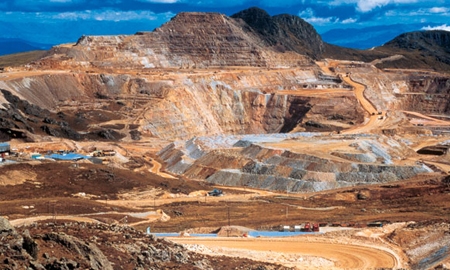The extractive sector, is one of the biggest contributors to government coffers. Fluctuations in international prices have seen tax revenues dip this year, yet overall the sector is strong and will remain an economic backbone for Peru for decades to come. In fact, there are some $57 billion worth of mining projects in the pipeline that, once executed, would more than double the country’s copper output by 2016.
Here, Minister of Energy and Mines Jorge Merino Tafur speaks about the challenges of balancing shareholder and community interests, and the role that the Peruvian government and private investors play in the sector’s development.
The mining sector is one of the biggest contributors to Peru’s GDP. What are the dangers of relying too heavily on this sector?
Peru is essentially a mining country, but also offers investment opportunities in oil and electricity, for example, and in that way, I think it’s time to see Peru as a country of investment opportunities in the form of a territorial development. The synergies that mining and hydrocarbons can produce must also open up investment opportunities that could generate added value such as petrochemical plants, refineries, etc. These are the opportunities that Peru is providing today.
Mining is an activity with a heavy impact on local communities. How does the sector involve the populations of these rural communities?
Mining in Peru is blessed with a diversity of products and in the Andes mountains there is much to explore. These investment opportunities have to be developed from the perspective of both the communities and the investors, so that they may coexist. Enabling social inclusion does not affect the competitiveness of the country.
Also, when we speak of coexistence, we mean that the new mining issues should also contribute to other activities, such as agriculture or livestock farming.
What role has the U.S. played in developing Peru’s mining industry?
The U.S. has always had an important role in exploration in South America, especially after World War II. In Peru, it was the American geologists and companies who began exploration. The first mega projects were carried out in the 1940s and 50s, and now we are enjoying a new wave of exploration. Many projects are emerging and will allow for very rapid growth in the near future.
Please share with us your vision for this ministry.
I want a ministry that is closer to the people; a ministry that travels to see people’s expectations in order to attain a better understanding of the problems and solutions of short-term issues.
This ministry has a responsibility to promote greater investment in the area of mining, energy and hydrocarbons, but is also responsible for enabling foreign investment and lending investors our social, political, legal and fiscal knowledge of the places where they are going to invest. We must give them every assurance that we are a competitive country.
On the other hand, we have a big challenge as a ministry, to change the country’s energy matrix. We want electricity and gas to reach the population as quickly as possible. For that, we must develop a stronger gas policy. Also, we need to resolve the issue of overcrowding of gas and electricity.
How is the private sector contributing to reaching this goal?
I think it’s playing a big role, because all processes are done with private investment. For example, in terms of the issue of the overcrowding of gas, basically, the state is the major producer and will have an important role in the south and north pipeline.
While the state will be a strategic partner on the agenda of overcrowding, the main role will always be with the private sector.

0 COMMENTS